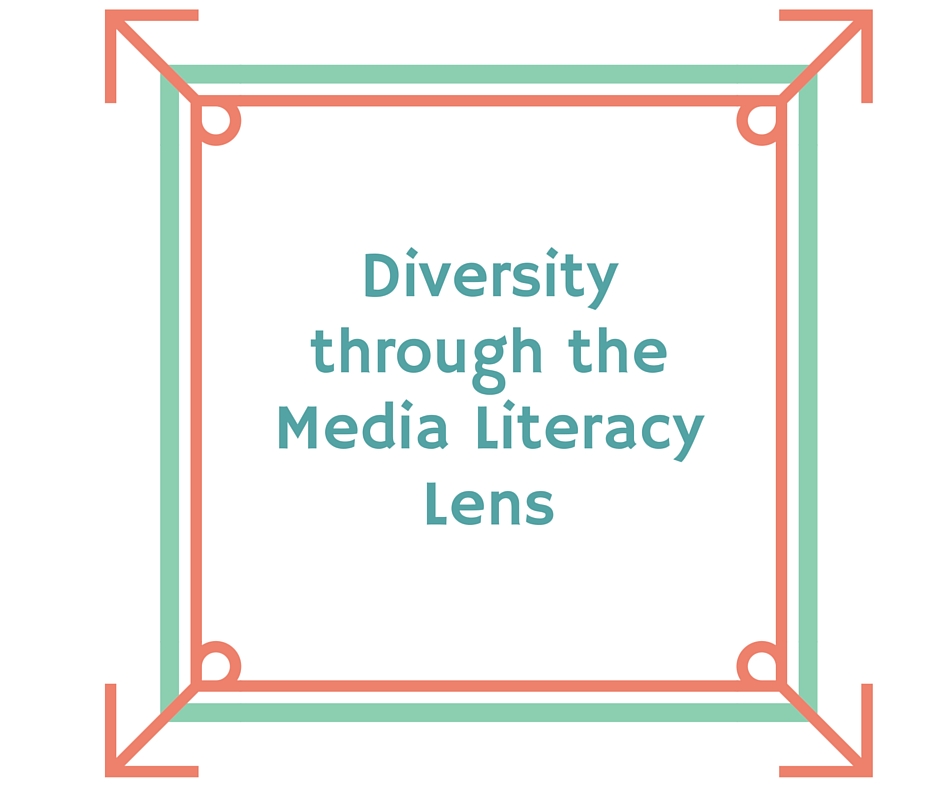![]() In this guest post, author and media literacy expert Tina L. Peterson, Ph.D., demonstrates how media literacy skills can help readers think deeply about diversity in books.
In this guest post, author and media literacy expert Tina L. Peterson, Ph.D., demonstrates how media literacy skills can help readers think deeply about diversity in books.
When I was a kid, I rarely paid attention to the ethnicities of characters in my favorite books. I probably assumed that, because I related to them, they were like me – white, suburban, and middle class. Despite the fact that many of my classmates and close friends were Latino and Asian, it didn’t occur to me that the characters in most books I read didn’t represent the mix of people in my life.
It was only when I got hooked on The Baby-Sitters Club series that I began to notice book characters’ ethnicities. Author Ann M. Martin incorporated characters of color in a way that gave each person a voice, rather than making non-white characters part of the backdrop to a white protagonist’s experience. The character Jessi Ramsey felt like my first black friend.
As I grew up I began reading in a more critical way, and questioning the stories and characters I encountered. In college I learned that the skills I was developing had a name: media literacy. This type of literacy can encourage young people to think about the representations they see in books, and identify perspectives that are emphasized as well as those that may be missing. It can help young readers (and the adults who guide them) appreciate the value of diversity in children’s literature.
Media literacy is an approach to education that encourages active reading/viewing and critical evaluation of media messages of all types including books, TV shows, video games, movies, music, and social media. Three of the five key questions of media literacy can guide discussions of children’s books:
 Who created this message?
Who created this message?
All too often, an author is just a name on a cover, and readers don’t think about the people who write the stories they enjoy. Encouraging young people to learn about their favorite authors can help them understand whose perspectives they are seeing. How many are black, or Latino, or Asian? How many are men, and how many are women?
This discussion doesn’t have to lead to tokenism in a reading list, but rather to an awareness of who tells the stories they enjoy. It’s also useful for children to learn that they can relate to an author who might seem different from them.
What lifestyles, values and points of view are represented in, or omitted from, this message?
The answer to this question varies widely in books for children as well as adults. For example, the points of view represented in a Nancy Drew novel (white, female, affluent) are in stark contrast to those in one of Matt de la Peña’s books (Latino, male, working class).
Encouraging students to identify perspectives that are emphasized or missing from the books they read can help them expand their horizons and imagine other world-views. In addition, seeking out books that include points of view they don’t usually encounter can cultivate empathy.
How might different people understand this message differently from me?
As Hamlet suggests to Horatio, ‘there are more things in heaven and earth than are dreamt of in your philosophy.’ Young readers should be encouraged to share with their peers the meanings they make of books, and the knowledge that informs those meanings.
Many may be surprised that another’s interpretation differs from their own. A book that incorporates Spanish or Arabic words may be understood differently by a child who speaks one of those languages at home. A black child who has heard about racial discrimination or experienced it firsthand might read a story about Rosa Parks differently than a white child would.
Media literacy education encourages critical reading and consideration of diverse points of view. It’s a productive and useful approach given the increasingly global everyday culture of the 21st century, when young people may encounter difference in their peers more than any generation did before them. Media literacy and intentional diversity in children’s literature can ensure that difference is treated as an opportunity for learning.
 Tina L. Peterson, Ph.D. is the author of Oscar and the Amazing Gravity Repellent (Capstone) and serves on the leadership council of the National Association for Media Literacy Education. More information is available at tinalpeterson.com
Tina L. Peterson, Ph.D. is the author of Oscar and the Amazing Gravity Repellent (Capstone) and serves on the leadership council of the National Association for Media Literacy Education. More information is available at tinalpeterson.com


2 thoughts on “Using Media Literacy to Examine Diversity In Literature”
Comments are closed.